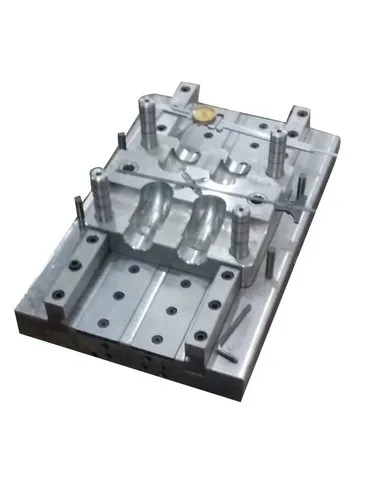Sure! Here’s a detailed breakdown of the differences between PVC (Polyvinyl Chloride) and other thermoplastics when it comes to molding:
1. Material Composition
PVC (Polyvinyl Chloride): PVC is a synthetic polymer made from the polymerization of vinyl chloride monomers. It can be categorized into two main forms: rigid (used in pipes, doors, windows) and flexible (used in wires, flooring). The flexibility of PVC depends on the addition of plasticizers.
Other Thermoplastics: These are a wide range of polymers that include PE (Polyethylene), PP (Polypropylene), ABS (Acrylonitrile Butadiene Styrene), PET (Polyethylene Terephthalate), PS (Polystyrene), and others. They are formed by heating and softening their molecular structure, allowing them to be molded and reshaped.
2. Processing Techniques
PVC: PVC can be processed using methods such as injection molding, extrusion, blow molding, and rotational molding. It has a moderate processing temperature range of around 160°C to 200°C (320°F to 392°F) for rigid PVC and slightly lower for flexible PVC. It requires special consideration during molding due to its potential to release harmful chlorine gas when overheated.
Other Thermoplastics: Thermoplastics like PP, PE, and PS have a wider range of processing temperatures. For example, PP typically has a processing range of 220°C to 250°C (428°F to 482°F), while PE can be processed at lower temperatures around 180°C to 240°C (356°F to 464°F). ABS and PS have similar processing ranges to PVC, making them also suitable for injection molding and extrusion.
3. Mechanical Properties
PVC: Rigid PVC is known for its high tensile strength, durability, and resistance to impact, but it is brittle at low temperatures. Flexible PVC, due to the inclusion of plasticizers, offers more flexibility and softness. PVC is resistant to environmental factors like UV rays, chemicals, and weather, making it ideal for outdoor applications.
Other Thermoplastics:
Polypropylene (PP) is more flexible and has better chemical resistance than PVC but is not as durable or rigid. It’s commonly used in products like automotive parts and medical devices.
Polyethylene (PE) is highly resistant to chemical corrosion and is flexible but not as strong as PVC. It’s ideal for packaging and containers.
ABS provides excellent impact resistance and strength at low temperatures, making it a go-to material for consumer goods and automotive parts.
4. Cost and Availability
PVC: PVC is a cost-effective thermoplastic and one of the most commonly used materials in industries ranging from construction (pipes, fittings) to healthcare (blood bags, IV tubing). It’s relatively inexpensive compared to other engineering plastics.
Other Thermoplastics: Polypropylene is also very affordable and widely used in manufacturing, whereas ABS can be more expensive than PVC but is favored in industries requiring high-strength and durability. Materials like POM (Acetal) and PEEK are more expensive but provide superior mechanical properties.
5. Chemical Resistance
PVC: PVC is highly resistant to acids, oils, and various chemicals, making it suitable for use in plumbing and chemical industries. However, it has limited resistance to solvents like ketones and aromatics.
Other Thermoplastics:
Polypropylene exhibits excellent chemical resistance to acids, bases, and solvents, especially at higher temperatures.
Polyethylene also offers good chemical resistance, but PEEK and POM provide even superior performance in extreme conditions, especially in the presence of aggressive chemicals or high temperatures.
6. Environmental and Health Considerations
PVC: One of the major environmental concerns with PVC is the use of chlorine during its production and its potential release of harmful dioxins when improperly disposed of. Additionally, flexible PVC can contain plasticizers like phthalates, which raise health concerns.
Other Thermoplastics: Most thermoplastics such as PP, PE, ABS, and PS have fewer environmental and health concerns compared to PVC, especially when it comes to plasticizer use. However, some flame retardants in ABS or styrene in PS can also present challenges in terms of toxicity.
7. Applications
PVC:
Rigid PVC is used in piping systems, construction materials (window profiles, doors), flooring, and signage.
Flexible PVC is found in wires and cables, inflatable products, medical tubing, and flooring.
Other Thermoplastics:
Polyethylene (PE) is commonly used in plastic bags, bottles, toys, and food containers.
Polypropylene (PP) is used in automotive parts, packaging, and textiles.
ABS is ideal for products requiring high strength and impact resistance, such as consumer electronics housings, automotive parts, and appliances.
PET is commonly used in food packaging (bottles) due to its strength and barrier properties.
8. Recycling
PVC: PVC is more difficult to recycle due to the additives used in its production and the release of harmful chemicals during processing. Its recycling rate is lower compared to other plastics.
Other Thermoplastics: Many thermoplastics like PP, PE, PET, and ABS are easier to recycle. PET is particularly well-known for its high recycling rates and can be recycled into products like clothing fibers and containers.
Conclusion
Each thermoplastic material has its own unique set of characteristics and advantages. PVC stands out for its cost-effectiveness, versatility, and durability but requires careful handling during processing due to environmental and health considerations. Other thermoplastics such as PP, PE, and ABS offer varying degrees of flexibility, chemical resistance, and strength, making them suitable for a broad array of applications. When choosing between PVC and other thermoplastics, factors such as mechanical properties, chemical resistance, cost, and environmental impact should be considered based on the intended application.

